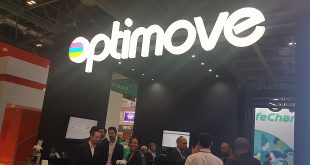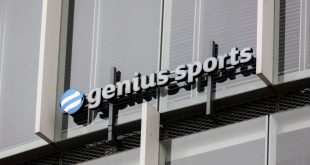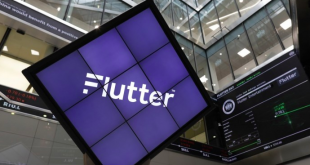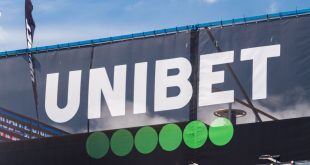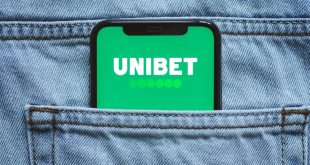
The experience of going to a stadium on a match day is one which has yet to be really altered by technological leaps and the digital age. Granted, everybody has a smartphone now, and so fewer than ever listen to the scores read out on the loudspeaker at halftime, but few clubs have fully embraced the digital age in terms of stadium modernisation and commercialisation.
Sports Revolution is one of the leading companies in this field, and have provided Celtic with an in-stadia experience which can satisfy the modern generation of tech-hungry fans. SBC caught up with Chief Operating Officer Richard Peters, to discuss their achievements thus far, and his visions for the future of the in-stadia experience.
_____________________
SBC: Hi Richard, and very nice to meet you. Could you tell our readers a bit more about what Sports Revolution does, and its achievements to date?
Richard: Sports Revolution is one of the UK’s leading sports media and marketing groups, active across media rights, sponsorship, stadium technology, mobile and social media. Headquartered in London, it also has offices in the Middle East and South East Asia.
Having started its business in static sports stadium media, Sports Revolution has transformed into a digitally focused company that harnesses the power of technology and social media to connect brands with fans inside the stadium and beyond. It is also a leading sports sponsorship consultancy, negotiating partnerships on behalf of rights holders and brands, and advising on optimisation of sponsored assets across physical and digital media.
From LED perimeter and mid-tier boards to concourse TV, giant screens and smartphone apps, Sports Revolution is driving the adoption of digital media in stadia in the UK and abroad, meeting demand from brands for more engaging assets and, in the process, opening up new revenue streams for rights holders and stadia operators. In the past, sports sponsorship used to be a static corporate badging exercise. Today, brands need to make their sponsorship and partnerships work in a far more dynamic way – not only through paid media in the stadium, but via organic earned media, built through social channels, story-telling and content.
In 2013, Sports Revolution was one of the first sports marketing experts in the UK to spot the potential of stadium wi-fi as a new channel for fan engagement and digital brand activity. As fans have long complained, large sports stadia are one of the few remaining black-spots of mobile connectivity. Sports Revolution understood their frustration and saw high-capacity stadium wi-fi, accompanied by mobile apps and services, as the answer. They saw its potential for enhancing the fan experience and adding a new digital media channel for sponsors and rights holders. Working with networking leaders Cisco Systems, Sports Revolution fitted Glasgow’s iconic Celtic Park with full-bandwidth wi-fi, connecting all 63,000 seats, including boxes and concourses.
At the same time as specifying, testing and perfecting the hardware, Sports Revolution also used its fan knowledge and social media expertise to develop a fan smartphone app; CelticLIVE. Content is curated by an on-site Sports Revolution team and broadcast with maximum relevance, moment-by-moment, giving fans what they want, when they want it. The content is the perfect second screen partner for live action, with short sharp match commentary and easy links to share on Twitter and Facebook. The fan can keep abreast of the game while reading the latest stats or voting for Man of the Match before tweeting about it using the fully integrated #CelticLive hashtag. Reacting to the events on the pitch, our content management team can engage the fan at all points throughout the game. We can then continue the conversation after the game as fans react to the days’ action.
The system was (by a long way) the first fully-fledged stadium wi-fi installation and accompanying smartphone fan app in a UK football ground, and has won a clutch of high-profile industry awards. During 2014 it won ‘Best Support Technology for Fans’ at the Sports Technology Awards, ‘Best Marketing Achievement’ at the European Club Association Awards and a Bronze Medal at the highly prestigious ‘Smarties’ global mobile marketing awards. The stadium wi-fi at Celtic Park has been so popular that it was also integrated into the Opening Ceremony of the 2014 Commonwealth Games at Celtic Park, allowing the experience to be shared by thousands of visitors and tourists.
SBC: You provide one of the most successful stadium wifi systems in Britain at Celtic Park. Can you tell us more about this, the recent deal made with Unibet, and the popularity of the CelticLIVE app?
Richard: CelticLIVE has been a huge hit with the fans, showing the pent-up demand for stadium wi-fi and in-game connectivity. The app has been downloaded over 50,000 times, used by an average of 10,000 fans at every Celtic game, who have shared over 80,000 videos on it in the last year.
The secret to Sports Revolution’s success with CelticLIVE has been its expertise in creating an app that follows the fan through the match-day experience, from pre-match build-up, to in-match action, to post-match analysis. Smart design, coupled with expertly produced real-time content, has hit the mark – reflecting Sport Revolution’s media knowledge of a market where brands are seeking to engage with consumers with targeted, relevant and real-time content.
Sports Revolution spotted many different opportunities for brands to engage with fans via stadium wi-fi – with the best potential in services that add value and enhance the experience on match-day. Betting has been one of the earliest sectors to tap into it, with Unibet recently signing up as official wi-fi and CelticLIVE betting partner. This is the first commercial use by a brand partner of a stadium-wifi installation at a UK football ground, and the first time in-play betting has been possible via a connected stadium fan app.
Unibet will offer a wide range of odds to fans logged onto CelticLIVE, including in-play odds linked to live events as they unfold, such as penalties, cautions, next scorer and result predictions. Unibet is offering over 100 ways to bet on every Celtic game, plus in-play cash-in and live streaming on thousands of other sporting events.
Sports Revolution has seen strong demand from fans to use the CelticLIVE app for betting – indeed, after social media, it is the most-requested activity among users. The network had been previously locked to betting sites, but this demand can now be met via the Unibet service.
SBC: What do you think is the potential of fan engagement over such a channel. Essentially, how can clubs further commercialise and enhance the modern fan experience?
Richard: There has been a big growth in so-called ‘second screen’ applications in recent years. It started in television, as broadcasters sought to supplement and add value to the viewing experience (and also to boost live viewing audiences) by offering supporting apps designed to be used alongside the live TV programme. The same principle now applies to live sports, with second screen applications having the potential to enhance the match-day experience for fans.
A key reason why second screening is coming into live sport is because broadcasters have used it to make home-viewing far more compelling. Faced with rising ticket prices, and stadia where they can’t get a signal, some fans may prefer to watch their team on a 3D TV with surround sound at home, with all the supporting info and video streaming in on multiple devices. Football clubs and stadia need to compete with this, making the match-day experience equally immersive and interactive. Sponsors and brand partners are demanding this too. They want to engage with fans at the game as fully as they can outside of the stadium.
To work properly, it all has to be fully focused on enhancing the fan experience with very strong and relevant club-specific content. That’s why our CelticLIVE app works so well. Any brand engagement and commercial opportunities can only work if a firm foundation of fan engagement has been established first. And when they are offered, they also have to add value. For example, we also worked with Magners to offer in-play Man of the Match voting via CelticLIVE and now Unibet are adding entertainment and engagement with live in-play betting.
In the US, in arenas such as the new Levi’s stadium, home of the San Francisco 49ers, we can see how the full potential of stadium wi-fi may be realised with a host of features – some commercial, others not – that all add to the experience. Services include food and drink ordering from your seat, seat upgrades, interactive voting and merchandise sales. Compared to the US, UK fans are only just seeing the beginning of what is possible.
But these transactional and sponsorship opportunities can only come when you have a critical mass of users. And you need authentic, relevant and non-commercial club content to build this in the first place. It has to be a genuine fan app first and foremost before it can grow into anything else.
SBC: In-stadia advertising has long had a presence in football, and with the ever increasing TV revenues and watchers generated by the Premier League, this will doubtless increase in costs accordingly. Can in-stadia advertising be made more profitable and just how profitable is it now?
Richard: UK football crowd numbers are slowly creeping up, but with many stadia at capacity, you will not see dramatic audience increases, which is the usual reason for increased advertising costs. Therefore, in-stadia ad revenue growth will not come from bigger crowds, but the development of new platforms delivering new and more engaging ways of reaching the fans in the ground – and this is exactly what wifi and fan apps offer. Without these new platforms it is difficult to see how revenues can increase for the clubs.
With international fanbases and daily communication opportunities, football clubs are media owners now, and as such, need to act like media owners by increasing the number of communication platforms and consumer contacts to increase their income. Stadium wi-fi fits into this mix and should be on the agenda for most clubs. The availability of advertising and sponsorship opportunities with audience targeting and segmenting should drive response rates for sponsors, which will in turn drive yields and therefore club revenue. It’s a win win.
SBC: With clubs across Britain rapidly modernising, what changes will we witness in terms of technological changes to in-stadia advertising and the overall in-stadia experience?
Richard: There is no doubt that the ‘connected stadium’ is the new model. The issue facing many clubs is the investment required to achieve this, and there are many options that can be explored. In the UK, a limiting factor is that many top clubs are bound by multi-year digital rights models that limit the ability for clubs to monetise content across digital platforms. These contracts pre-date many of the latest developments and didn’t anticipate stadium wi-fi when they were agreed. This will change in time, but it means we are still at a cross-roads as clubs wait until they are fully free to commercialise their own stadium connectivity. However, this is a fast changing world.
In the past five years, we at Sports Revolution drove the adoption of HDTV concourse systems into many of the UK’s biggest clubs, establishing that as a new (and now fully accepted) stadium media channel. The same goes for perimeter LED. Every top club now has it. Stadium wi-fi is the natural extension of this and the benefits are clear to see.
It’s only a matter of time before every big club gets it – fans want it, brands want it and when those two come together, things tend to happen.
_____________________________
Richard Peters – Sports Revolution Chief Operating Officer



